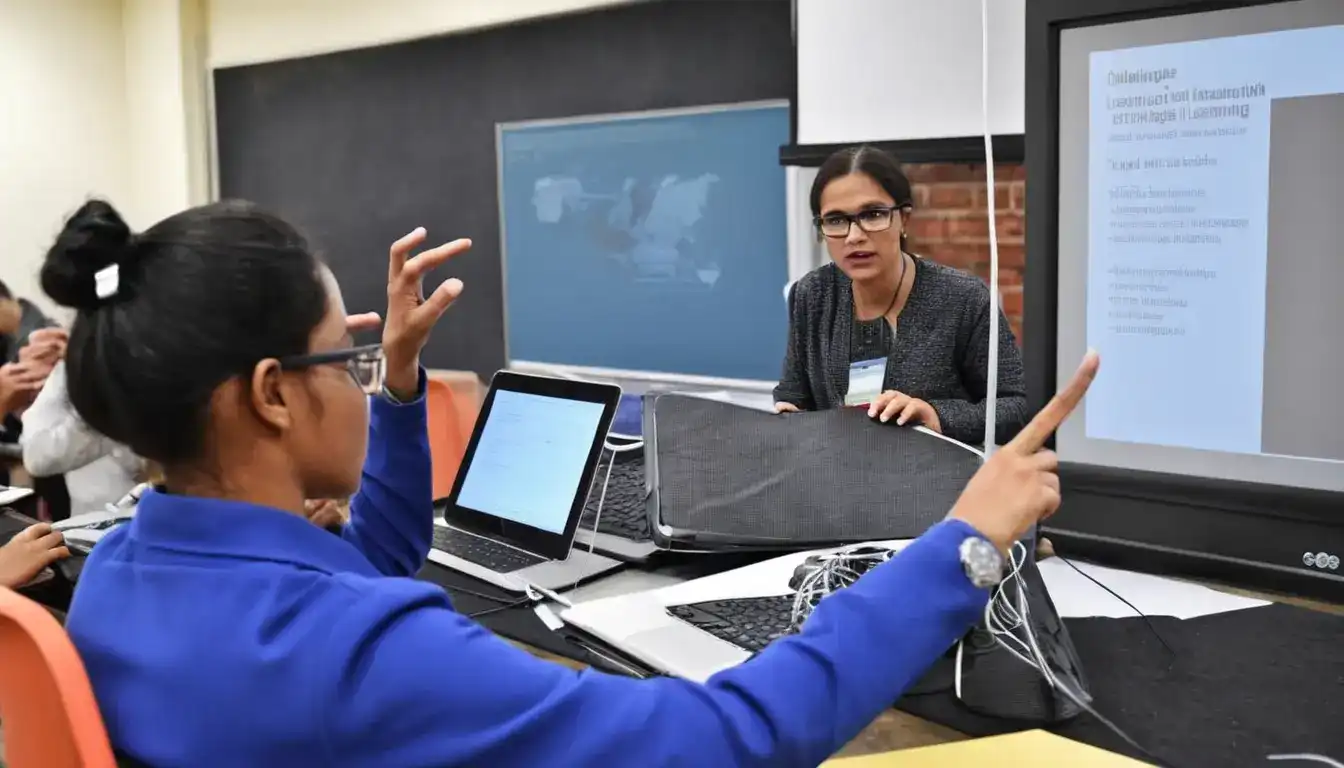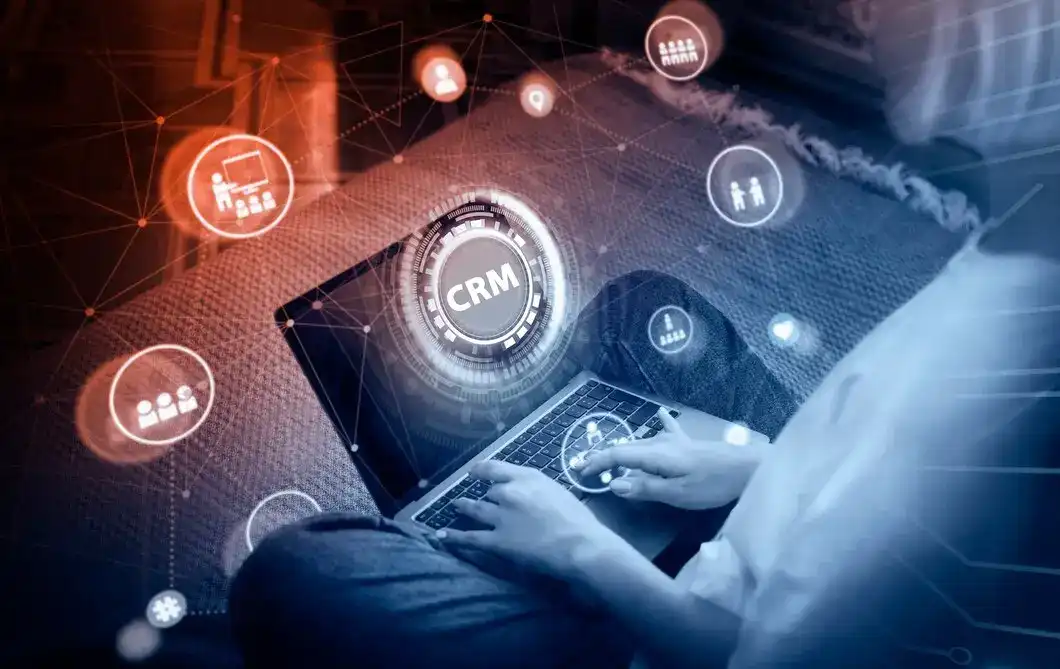Challenges Faced in Distance Learning and Technological Innovations That Facilitate a More Interactive and Effective Learning Experience
Emily Willis

Photo: Challenges Faced in Distance Learning and Technological Innovations That Facilitate a More Interactive and Effective Learning Experience
Distance learning has become increasingly prevalent in education, driven by technological advancements and the need for flexible learning options. While distance learning offers convenience and accessibility, it also presents unique challenges that impact the effectiveness and engagement of students. This article examines the challenges faced in distance learning and explores technological innovations that enhance interactivity and improve learning outcomes for students.
Challenges in Distance Learning
Lack of Face-to-Face Interaction: One of the primary challenges in distance learning is the absence of face-to-face interaction between students and instructors. Virtual classrooms can feel impersonal, making it challenging for students to engage actively, ask questions, and receive immediate feedback from educators.
Technological Barriers: Access to reliable internet connectivity and adequate digital devices remains a significant barrier for many students, particularly those in remote or underserved areas. Technological limitations can hinder participation in online lectures, access to course materials, and collaborative activities essential for learning.
Maintaining Student Engagement: Sustaining student motivation and engagement in virtual learning environments can be challenging. Without physical classroom dynamics, students may struggle to stay focused, participate in discussions, and maintain a sense of connection with peers and instructors.
Assessment and Monitoring: Conducting fair and effective assessments in distance learning settings poses logistical challenges. Ensuring academic integrity, preventing cheating, and providing timely feedback to students require innovative assessment strategies and robust monitoring tools.
Technological Innovations in Distance Learning
Interactive Learning Platforms: Advanced learning management systems (LMS) integrate interactive features such as video conferencing, chat forums, and virtual whiteboards. These platforms facilitate real-time collaboration, interactive lectures, and group discussions, replicating the interactive nature of traditional classrooms.
Virtual Reality (VR) and Augmented Reality (AR): VR and AR technologies enhance distance learning experiences by creating immersive virtual environments. Students can participate in virtual field trips, conduct scientific experiments, and engage in simulated scenarios that enhance understanding and retention of complex concepts.
Adaptive Learning Technologies: Adaptive learning technologies personalize learning experiences based on individual student needs and learning styles. AI-powered algorithms analyze student performance data to deliver customized content, adaptive quizzes, and personalized feedback that optimize learning outcomes.
Gamification and Interactive Content: Gamification techniques, such as quizzes, badges, and leaderboard systems, transform learning into a more engaging and competitive experience. Interactive multimedia content, including videos, animations, and simulations, enhances comprehension and retention of course materials.
Social Learning Networks: Social learning networks and online communities foster peer-to-peer collaboration, knowledge sharing, and mentorship among students. Discussion forums, virtual study groups, and collaborative projects promote social interaction, collective learning, and the exchange of ideas beyond traditional classroom boundaries.
Benefits of Enhanced Interactivity in Distance Learning
Improved Student Engagement: Technological innovations that promote interactivity enhance student engagement, motivation, and active participation in virtual learning environments. Interactive learning experiences stimulate curiosity, encourage critical thinking, and foster a deeper understanding of course content.
Enhanced Collaboration and Communication: Virtual collaboration tools enable students to collaborate on projects, share ideas, and communicate effectively with peers and instructors. Enhanced communication facilitates meaningful interactions, promotes teamwork skills, and builds a sense of community among learners.
Flexibility and Accessibility: Technological innovations in distance learning expand access to education for students with diverse learning needs, geographic locations, and scheduling constraints. Flexible learning options empower learners to pursue educational goals while balancing professional, personal, and academic commitments.
Conclusion
Addressing the challenges faced in distance learning requires ongoing innovation and investment in technological solutions that enhance interactivity, engagement, and effectiveness. By leveraging interactive learning platforms, VR/AR technologies, adaptive learning tools, and social learning networks, educators can create dynamic and inclusive learning environments that cater to diverse student needs and promote lifelong learning. Embracing these technological innovations not only enriches the educational experience but also prepares students to thrive in a digitally interconnected world.
Latest ✨
View Allvibrant cultures of Mexico, China, and India, highlighting their unique customs, traditions, and ways of life. It emphasizes the importance of immersing oneself in these cultures to connect with the soul of a place and create lasting memories.
Emily Willis
Virtual reality (VR) and augmented reality (AR) are transforming the entertainment industry by offering immersive experiences that blur the lines between the real and virtual worlds. VR completely transports users into computer-generated environments, while AR overlays digital elements onto the real world.
Emily Willis
The Pacific Ocean is home to remote and enchanting islands that offer untouched natural beauty, rich cultures, and unique experiences for adventurous travelers. Tips for exploring these hidden gems include researching your destination, packing light, respecting local culture, exploring responsibly, and staying safe.
Emily Willis
concept of "sports for social good," which uses the power of sports to address social issues and create positive change. It highlights the impact of sports on diversity, gender equality, youth development, community engagement, health, and peacebuilding.
Emily Willis
Business
View All
August 5, 2024
How to Create Engaging Content and Convert Visitors to Customerscreating engaging content to attract and retain customers in the digital age. It provides strategies for understanding the audience, setting content goals, creating high-quality content, using storytelling and emotional connection, and optimizing content for conversions. It also covers content formats and distribution, measuring and analyzing content performance, and building relationships with influencers and user-generated content.
Emily Willis

August 5, 2024
How to Improve Your Leadership Skillsleadership skills in achieving organizational success. It discusses various aspects of leadership, including understanding leadership, identifying leadership styles, developing effective communication skills, building trust and credibility, developing emotional intelligence, delegating tasks effectively, embracing continuous learning, fostering a positive work culture, making tough decisions, developing a growth mindset, and building a strong team.
Emily Willis

August 5, 2024
Master Your Business Financial Plan in 5 Stepssecrets to mastering your business financial plan with five simple steps. Learn how to analyze financial data, set measurable goals, and create a comprehensive strategy for success. Unlock profitability, make confident decisions, and ensure a bright future for your business
Emily Willis
Economy
View AllBest Secured Loans for Debt Consolidation with Low Interest Rates | Compare Top Lenders & Save Money on Monthly Payments
Read MoreThe digital economy is rapidly changing the job market, with trends such as remote work, the gig economy, automation, e-commerce, cybersecurity, digital skills, and changes in traditional industries having significant implications. These trends offer both opportunities and challenges, requiring individuals and organizations to adapt by embracing flexibility, investing in continuous learning, and staying abreast of technological advancements in order to thrive in this evolving landscape.
Read MoreIn today's rapidly changing economic landscape, innovation and resilience are more important than ever. Innovation drives progress and competitiveness by creating new ideas and solutions to meet market needs. Resilience helps businesses withstand shocks and bounce back from setbacks by planning strategically and diversifying resources.
Read MoreEntertainment
View All
August 4, 2024
The Latest Music Trends, Artists Influencing Pop Culture, and How Digital Platforms Facilitate the Distribution of Music GloballyThe music industry is constantly changing due to consumer preferences, technology, and the influence of artists. Digital platforms have revolutionized music creation, distribution, and consumption, leading to genre fusion, the rise of independent artists, and collaborative projects. Influential artists like Billie Eilish, BTS, and Taylor Swift have shaped pop culture globally. Streaming services, social media, and direct-to-fan engagement have transformed music distribution. Digital platforms also promote cultural diversity and inclusivity, expand markets and revenue, and drive technological advancements. The industry is also focusing on sustainability and ethical practices. To succeed in the future, stakeholders must embrace digital transformation and champion inclusivity.
Emily Willis

August 5, 2024
Video Games: Enduring Appeal, Immersive Worlds, and Diverse Genresenduring appeal of video games, highlighting their ability to transport players to fantastical realms, challenge their minds, and foster connections with others. It explores the magic of immersive worlds, the vast array of genres available, and the social power of gaming.
Emily Willis

August 5, 2024
Music Universal Language: Connecting and Inspiring Across CulturesMusic has the power to transcend language barriers and connect people on a deep emotional level. It serves as a bridge between cultures, fostering understanding and appreciation for diversity. The universality of rhythm and melody creates a sense of unity, while the diversity of musical styles allows for exploration and creativity.
Emily Willis
Health
View AllRegular exercise is essential for maintaining both physical and mental health. It helps with weight management, cardiovascular health, muscle strength, energy levels, and sleep quality. Exercise also reduces stress and anxiety, improves mood, cognitive function, and self-esteem, and lowers the risk of depression. Different types of exercises, such as aerobic, strength training, flexibility, balance, and mind-body exercises, contribute to overall health. To start and maintain an exercise routine, it is important to start slowly, set realistic goals, find enjoyable activities, stay consistent, and listen to your body.
Emily Willis
Regular physical activity is crucial for maintaining long-term health and well-being. It has numerous benefits, including improving cardiovascular health, aiding in weight management, enhancing mental health, strengthening bones, boosting immune function, and promoting longevity.
Emily Willis
Quality sleep is essential for overall health and well-being, impacting physical, cognitive and emotional functioning. Lack of quality sleep can lead to a variety of health issues, including weakened immune function, heart problems, weight gain and cognitive impairment.
Emily Willis
Trending 🔥
View All
1
3
4
5
6
7
8
9
10
Lifestyle
View AllTechnology
View All
August 5, 2024
Top Unity Software Development Trends to Watch in 2024
Explore the top Unity software development trends that will shape the gaming industry in 2024. From AI integration to VR/AR immersion, cross-platform reach, cloud collaboration, and mobile gaming, Unity is revolutionizing gaming experiences. Stay ahead in the dynamic world of game development with these insights.

August 5, 2024
Top 10 Steam Games of 2024
Discover the 10 best Steam games of 2024 and embark on an unforgettable adventure. From breathtaking open-world epics to thrilling FPS battles, these must-play games will keep you entertained for hours. Get ready to dive into the exciting world of Steam gaming and discover your next favorite game!

August 5, 2024
Application of IoT in Various Industries
The Internet of Things (IoT) has revolutionized various industries by enabling real-time data collection, analysis, and automation. In manufacturing, IoT has led to smart factories, predictive maintenance, and supply chain optimization. In healthcare, IoT has facilitated remote patient monitoring, smart hospitals, and enhanced patient care.

August 5, 2024
Oculus Quest 2 vs HTC Vive Pro – Which Should You Choose?
Oculus Quest 2 vs HTC Vive Pro – which VR headset reigns supreme? Dive into this ultimate showdown to discover the strengths and weaknesses of each, and decide which one is worth your investment. From specs and comfort to content and price, we'll help you make an informed choice.




















